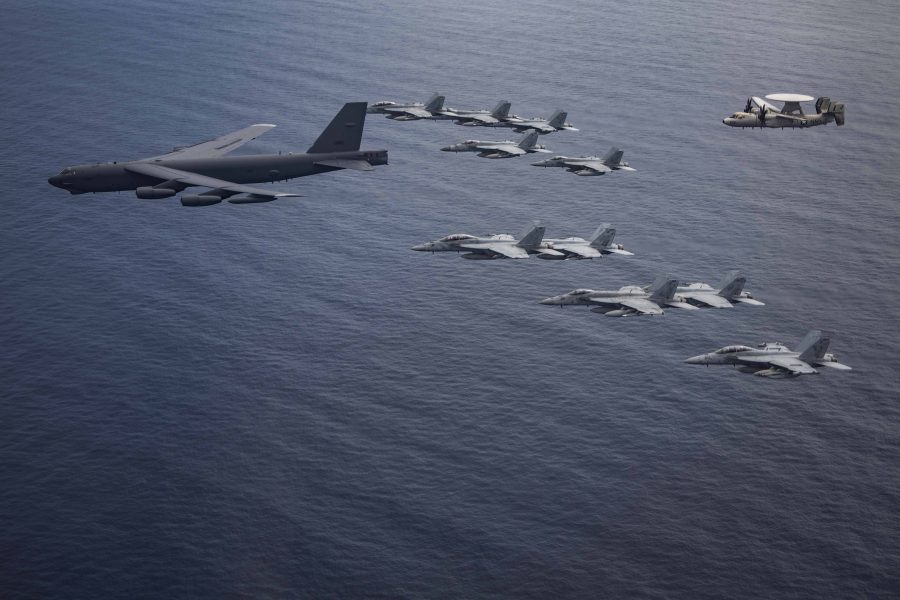A B-52 from Barksdale Air Force Base, La., flew a 28-hour mission to the Pacific on July 2, linking up with two Navy carrier strike groups in the South China Sea in a show of strength in international waters.
The B-52 from the 96th Bomb Squadron linked up with the U.S.S. Nimitz and U.S.S. Ronald Reagan, flying alongside F/A-18 Super Hornets and an E-2 Hawkeye early aerial threat warning aircraft. The maritime integration exercise aimed to show the military’s “commitment to the security and stability of the region,” according to a Pacific Air Forces release. That practice aims to deter Chinese aggression in the area.

The flight “demonstrates U.S. capability to rapidly deploy to a forward operating base and execute long-range strike missions,” 96th Bomb Squadron Commander Lt. Col. Christopher Duff said in the release. “This sortie demonstrates our ability to reach out from home station, fly anywhere in the world and execute those missions, rapidly regenerate from a forward operating base and continue operations.”

Following the exercise, the B-52 landed at Andersen Air Force Base, Guam, on July 4. In April, the Air Force ended the 16-year-long continuous bomber presence mission at the base and has since shifted to a “dynamic force employment” model of bomber operations in the region in which smaller numbers of aircraft fly directly from their home station to the area. Other recent missions include a B-1 that flew to Japan on April 22, and three B-52s from Barksdale that relocated to Eielson Air Force Base, Alaska, on June 14 to fly in the Indo-Pacific.
“As we operate throughout the Indo-Pacific theater, our fleet units continue to seek out every opportunity to strengthen our capabilities and proficiency at conducting joint, combined, all-domain operations with our partner teams,” Navy Cmdr. Joshua Fagan, Task Force 70 air operations officer, said in the release. “Some of the recent events bringing Air Force B-52s and B-1s, Navy aircraft, and our ships at sea together on shared networks in support of integrated missions have been good opportunities for us to exercise the joint mission planning and coordination processes that we depend on to operate safely and effectively out here.”
